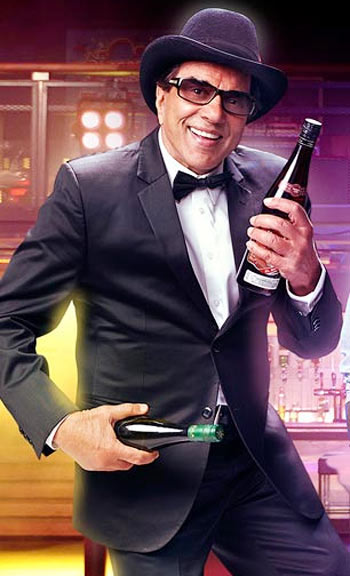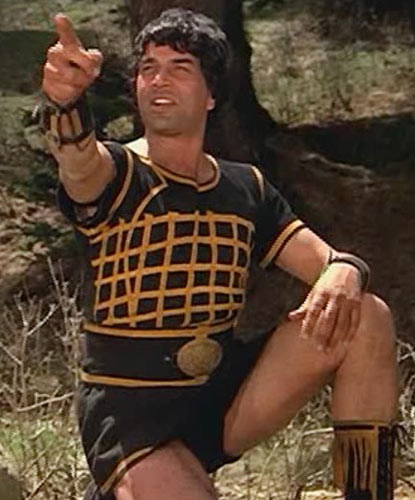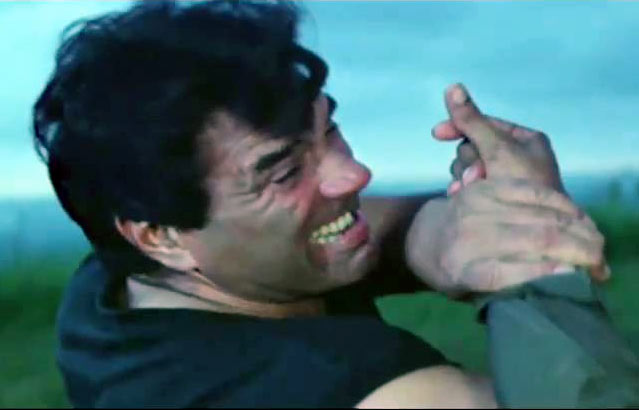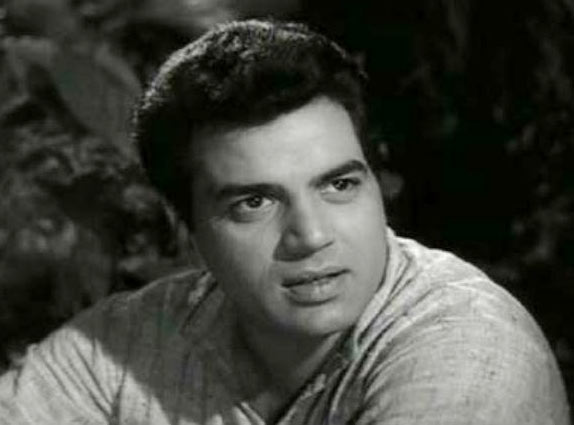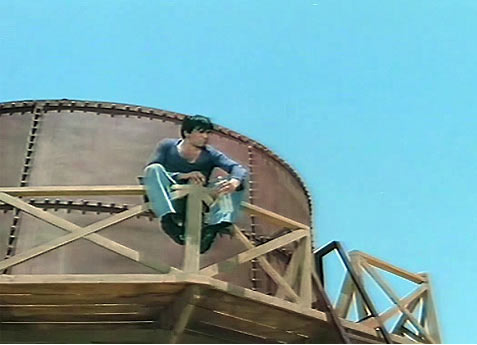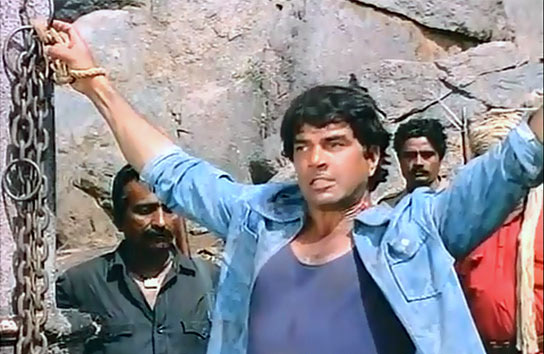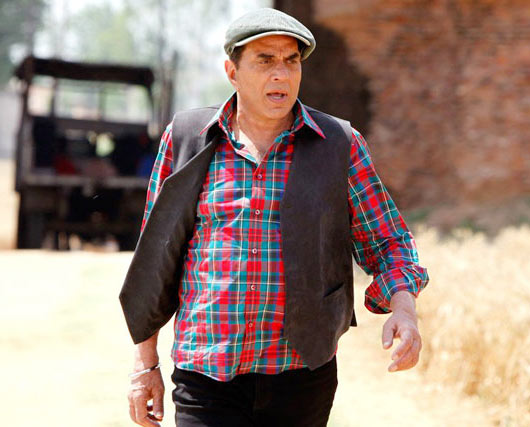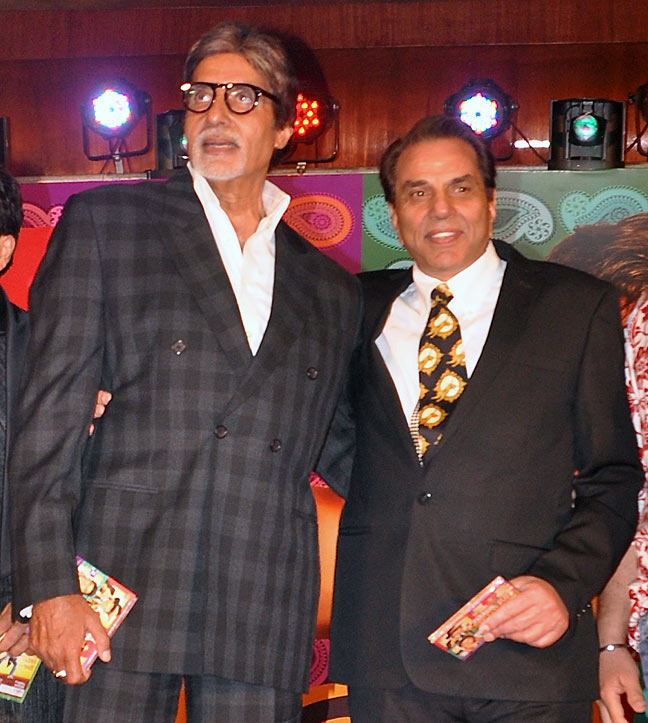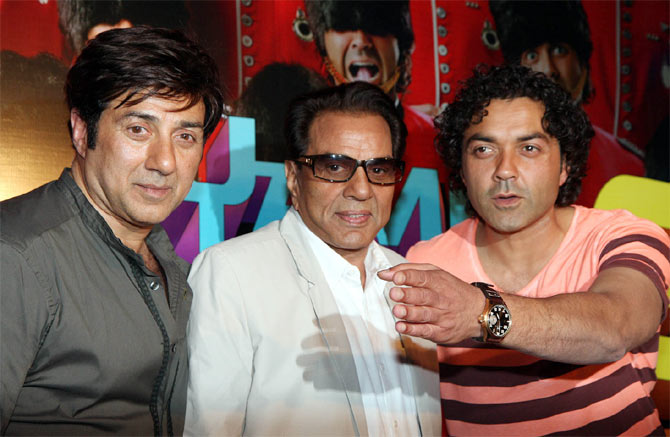 | « Back to article | Print this article |
10 Reasons Why We LOVE Dharmendra
There is only one Dharmendra.
He smiled a perfect smile, threw a few hundred punches, wooed the loveliest ladies in the country, held his own as an actor and remains underrated no matter how much applause we throw his way.
On December 8, the actor celebrated his 78th birthday, and we propose a toast to the man who has gamely entertained us over the years.
And while we each have our favourite Dharmendra movies and moments -- a list I encourage you, dear reader, to share in the comment section below -- here is my list of just 10 things about the man that make him very special indeed.
Click Next to find out.
1. He could pull off a skirt
It takes a real man to star in the most homoerotic Bollywood actioner of them all and yet emerge more macho than ever -- and this while his legs looked better in thigh-grazing hemlines than co-star Zeenat Aman.
Toned and tough, Dharmendra was always ready for a lark, no matter how outlandish.
2. He fought like it mattered
The good ol’ dhishoom-dhishoom has been a prerequisite for all Hindi film heroes, but the quickly aggravated Punjabi powerhouse threw punches more realistically than most, and may well have left a trail of battered stuntmen in his wake.
The aggression was thrillingly unhinged, surprisingly nimble, and, thanks to his build, relatively credible.
And hey, he did Amitabh Bachchan’s iconic Deewar scene -- where he locks a door and throws away the key before thrashing all the goons inside -- a few years earlier in a movie called Kahani Kismat Ki.
3. He looked ridiculously good in black and white
Dilip Kumar once said that his only query to the Almighty would be 'Why did you not make me as handsome as Dharmendra?'
It’s a fair question, and one any of our leading men down the ages could justifiably ask, so immaculately chiselled did our hero look. And while he was pin-up material for many decades, the older black and white films showed him off better than ever.
4. He made the word 'suicide' hilarious
In one of the funniest sequences in all of cinema, Dharmendra’s Veeru drunkenly hangs from a water-tank, with a crowd of intrigued villagers in turn hanging onto his every word (Some of which are in English and thus confuse them).
Not content merely with invoking legendary lovers, Veeru thickens his threat with a lovers’ curse which would bring a famine upon the village, even as he slanders a poor old lady.
Oh, and for good measure, he refers to his beloved by her horse’s name.
Magnificent.
5. He tamed the shrew.
Our cinema has rarely had a heroine as significantly sassy as the sharp-tongued Hema Malini, and while the Dreamgirl collaborated with many an on-screen paramour, none had the plucky lady’s measure quite as consummately as Dharmendra.
He matched her, step for feisty step, and both superstars brought out the best in each other. The fact that he changed his religion to marry her, well, was just tabloid-friendly icing on a cake we already loved.
6. He frightened dogs across the nation
There are many Dharmendra dialogues one can live by, but few have been as caricatured as his bloodthirsty refrain, one so ubiquitous it’s hard to imagine which film it appeared in first. The words, however, are clearly etched in all our memories (and impossible not to snigger at): kutte kameene, main tera khoon pii jaaoonga.
As hyper-aggressive punchlines go, you’ll be hard-pressed to find any that have become as endearing.
7. He was the most articulate chauffeur of all time.
Most of us learnt how to say 'driver' in Hindi because of Dharmendra’s Pyaremohan Allahabadi in Hrishikesh Mukherjee’s exquisite comedy Chupke Chupke ('vaahan-chalak', in case you’d forgotten).
And while this white-clad alter ego fumbled in English and was particularly intrigued by the whimsies of pronunciation ('phthisis' stumped him memorably), his Hindi turn of phrase was exquisite.
Like when -- after he said 'aake-aake' to match Om Prakash’s more colloquial 'khade-khade- -- he justified it thus: 'Saheb, jab aapne ‘khade-khade’ ka do baar prayag kiya toh humein bahut achcha laga. Toh usi chhand mein humne ‘aake-aake’ kehke kavita ka ras le liya.'
Bravo, Pyare.
8. He wanted to hammer politicians into shape
Dharmendra didn’t make for the most attentive politician -- when elected (in 2004, from Bikaner and for the BJP) he mostly skipped Parliament sessions -- but he provided a priceless comment during his election campaign.
In true Garam Dharam fashion, fed up with political hypocrisy and mudslinging, he suggested he be elected Dictator Perpetuo to teach politicians the 'basic etiquette that democracy requires.'
Ah, but for the sight of Dharmendra walloping netas in Parliament.
9. He gave the best Filmfare acceptance speech.
Look, we know those awards are a bloody sham. But despite that, we tune in and actors cross their fingers, meaninglessness be damned.
Back in 1997, after being overlooked for many decades of fine performances, Dharmendra was given the Lifetime Achievement Award and -- in true Jat style -- he provided a staggeringly honest moment.
His speech was drunk and rambling and yet remains one of the most touching occasions in the history of the awards.
10. He produced Ghayal and Socha Na Tha
I mention those two films in particular because with them Dharmendra gave budding first-time directors like Raj Kumar Santoshi and Imtiaz Ali their first breaks, if only to launch his sons and nephews.
He’s always backed people and stories worth believing in.
Back in the day, he was the presenter for Hrishikesh Mukherjee’s mature and evocative Satyakam, a film which contains what Dharmendra rightly considers his own finest performance.
